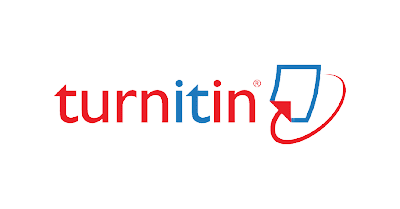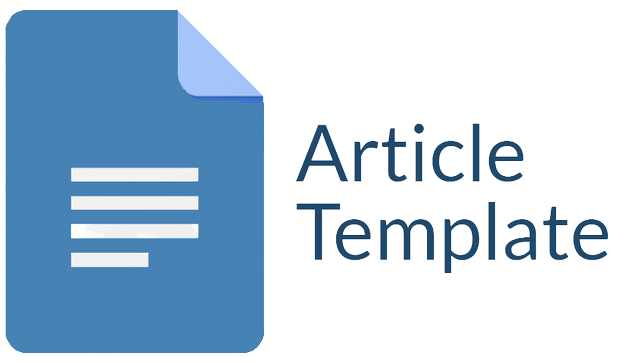IDENTIFIKASI PENGELOMPOKAN TITIK PENJEMPUTAN DAN TITIK PENGANTARAN PERJALANAN TAKSI MENGGUNAKAN ALGORITMA DBSCAN
Abstract
Pesatnya pertumbuhan wilayah perkotaan dalam beberapa tahun terakhir mengakibatkan keterkaitan dan saling mempengaruhi antara rutinitas perjalanan harian penduduk kota dan penggunaan transportasi umum. Kepuasan pelayanan kepada penumpang merupakan hal yang sangat terkait dengan usaha armada taksi, dimulai dari proses penjemputan hingga pengantaran ke tujuan. Waktu menunggu taksi menjadi faktor penting bagi penumpang dalam memilih titik penjemputan yang tepat di lingkungan perkotaan. Mengidentifikasi sejarah permintaan penumpang taksi secara akurat dapat membantu pengelola armada taksi dalam mengalokasikan sumber daya terutama di wilayah perkotaan. Dalam penelitian ini, algoritma DBSCAN digunakan untuk mengidentifikasi pola cluster yang muncul dari titik penjemputan dan titik pengantaran penumpang berdasarkan data perjalanan taksi. Data yang digunakan berasal dari Kaggle, dan fokus penelitian ini adalah perjalanan taksi di Kota Brooklyn. Pada titik penjemputan penumpang, teridentifikasi 3 cluster dengan pola sebaran jalur yang memiliki potensi area yang signifikan terletak di sekitar pusat perbelanjaan seperti Atlantic Avenue Barclays Center, Arena Barclays Center, Flatbush Avenue, dan Atlantic Avenue. Sementara itu, pada titik pengantaran penumpang, terdapat 2 cluster dengan pola sebaran jalur yang memiliki potensi area signifikan terletak di Myrtle Avenue, Flatbush Avenue, Lafayette Avenue, Williamsburg, dan Dumbo.
Downloads
References
C., M., & H., C. (2022). Parallel DBSCAN Clustering Algorithm Using Hadoop Map-reduce Framework for Spatial Data. I.J. Information Technology and Computer Science, 3.
Chicco, D., Oneto, L., & Tavazzi, E. (2022). Eleven quick tips for data cleaning and feature engineering. PLoS Comput Biol 18(12): e1010718.
Gao, Y., Jiang, D., & Xu, Y. (2018). Optimize taxi driving strategies based on reinforcement learning. International Journal of Geographical Information Science.
Hossain, M. Z., Islam, M. J., Rahman Miah, M. W., Rony, J. H., & Begum, M. (2021). Develop a dynamic DBSCAN algorithm for solving initial parameter selection problem of the DBSCAN algorithm. Indonesian Journal of Electrical Engineering and Computer Science, 1.
Jian, S., Li, D., & Yu, Y. (2021). Research on Taxi Operation Characteristics by Improved DBSCAN Density Clustering Algorithm and K-means Clustering Algorithm. 1.
Malhan, A. (2017). ST-OPTICS: A spatial-temporal clustering algorithm with time recommendations for taxi services. Indraprastha Institute of Information Technology, Delhi.
Nurhaliza, N., & Mustakim. (2021). Pengelompokan Data Kasus Covid-19 di Dunia Menggunakan Algoritma DBSCAN. Indonesian Journal of Informatic Research and Software Engineering, 1-8.
Sari, B. N., & Primajaya, A. (2019). Penerapan Clustering DBSCAN untuk Pertanian Padi di Kabupaten Karawang. Jurnal Informatika dan Komputer Vol. 4.
Sugi Almantara, I. P., Sri Ariyani, N. W., & Alit Swamardika, I. B. (2020). Spatial Data Analysis using DBSCAN Method and KNN classification. International Journal of Engineering and Emerging Technology, Vol.5, No.2.
Suyanto, 1.-(. (2017). Data mining : untuk klasifikasi dan klasterisasi data / Suyanto. Bandung: Penerbit Informatika.
Ulak, M. B., Yazici, A., & Aljarrah, M. (2020). Value of convenience for taxi trips in New York City.
United Nations, Department of Economic and Social Affairs, Population Division. (2017). World Population Ageing 2017 (ST/ESA/SER.A/408).
Vizuete-Luciano, E., Guill´en-Pujadas, M., Alaminos, D., & Merigo-Lindahl, J. M. (2023). Taxi and urban mobility studies: A bibliometric analysis. 1.
You, L., Guan, Z., Li, N., Zhang, J., Cui, H., Claramunt, C., & Cao, R. (2021). A Spatio-Temporal Schedule-Based Neural Network for Urban Taxi Waiting Time Prediction. ISPRS International Journal of Geo-Information.
Zhang, C., Zhu, F., Wang, X., Sun, L., Tang, H., & Lv, Y. (2020). Taxi Demand Prediction Using Parallel Multi-Task Learning Model. IEEE TRANSACTIONS ON INTELLIGENT TRANSPORTATION SYSTEMS.
Copyright (c) 2024 Anisa Salsabila, Lizda Iswari

This work is licensed under a Creative Commons Attribution-ShareAlike 4.0 International License.
Jurnal allows anyone to compose, correct, and do derivative works, even for commercial purposes, as long as they credit for the original work. This license is the freest. It is recommended for maximum distribution and use of licensed material.
The submitted paper is assumed not to contain any proprietary materials that are not protected by patent rights or patent applications; The responsibility for technical content and protection of proprietary materials rests with the authors and their organizations and not the responsibility of journal or its editorial staff. The primary (first/appropriate) author is responsible for ensuring that the article has been viewed and approved by all other authors. The author's responsibility is to obtain all necessary copyright waivers to use any copyrighted material in the manuscript before submission.
Jurnal Pendidikan, Sains dan Teknologi allows the author(s) to hold the copyright without restrictions and allow the author(s) to retain publishing rights without restrictions. Jurnal Pendidikan, Sains dan Teknologi CC-BY-SA or an equivalent license as the optimal license for the publication, distribution, use, and reuse of scholarly work. Jurnal Pendidikan, Sains dan Teknologi allows the author(s) to hold the copyright without restrictions and allow the author(s) to retain publishing rights without restrictions. Jurnal Pendidikan, Sains dan Teknologi CC-BY-SA or an equivalent license as the optimal license for the publication, distribution, use, and reuse of scholarly work.
In developing strategy and setting priorities Jurnal Pendidikan, Sains dan Teknologi recognize that free access is better than priced access, libre access is better than free access, and libre under CC-BY-SA or the equivalent is better than libre under more restrictive open licenses. We should achieve what we can when we can. We should not delay achieving free in order to achieve libre, and we should not stop with free when we can achieve libre.
Jurnal Pendidikan, Sains dan Teknologi is licensed under a Creative Commons Attribution-ShareAlike 4.0 International License.
You are free to:
- Share a copy and redistribute the material in any medium or format
- Adapt a remix, transform, and build upon the material for any purpose, even commercially.
- The licensor cannot revoke these freedoms as long as you follow the license terms.






